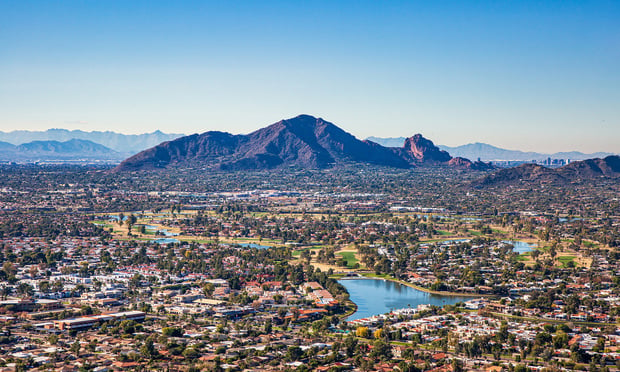Mesa, a submarket of Phoenix, has become the newest hotspot for Phoenix multifamily investment. According to the second quarter report from ABI Multifamily, Mesa saw the biggest increase in multifamily investment activity in the greater Phoenix area. It isn’t surprising that investors have turned to Mesa. The city’s geography makes it a good candidate growth and there is strong rent and population growth. This combination of rising demand and rents will could trigger new apartment development in a market that has seen little new construction in the past.
“In the past few years, Mesa has met with a bit more success,” Roland Murphy, director of research at ABI Multifamily, tells GlobeSt.com. “After years of effort and concession, the city finally managed to land a development agreement with Arizona State University, which was something it had pinned a lot of hopes on for a long time. This is valuable both on its own and as a confidence- and credibility-boosting signal for the rest of the market that Mesa has some real momentum again.
There’s also the perception that Mesa has been an overlooked area for long enough that it may be an easier, more receptive and less expensive market in which to develop.”
The success in Mesa is new for the market, which has seen little interest or development activity this cycle and earlier. “Mesa has a long and mixed history when it comes to redevelopment and revitalization. Having developed comparatively early, it had farther to fall during the various downturns of the last 25 years, and it has struggled in its comeback efforts,” says Murphy.
In fact, Mesa has been skipped over in favor of many other adjacent Phoenix submarkets. “Gilbert and Chandler took a lot of focus in the last two recoveries, in part because it’s easier to develop new areas than to redevelop existing ones,” says Murphy. “Combine that with the facts that Mesa hasn’t enjoyed the same volume of private development along its portion of the light rail implementation that the Phoenix-Tempe or Tempe-Mesa legs have seen and that Mesa has been less successful in getting bond and targeted economic development proposals either approved by voters or implemented well in their executions, and its efforts can be described as more hit and miss than other cities.”
However, now, that is all changing. Currently, Mesa has nearly 150 public-private projects over $5 million. “Development cost estimates aren’t available for six of those, but for the ones that do have cost projections, the total construction estimate is more than $10B, one of the highest in the state,” says Murphy, adding that some are significant. “One interesting note is that more than $7 billion of that is in four data center/extreme high tech projects, including the Apple iCloud Command Center that finished in mid-2018 and the EdgeCore Data Center that completed its first phase in April,” he says. “Given this momentum, it’s not surprising that Google announced plans last month for its $1 billion data center.”
This shift in perception along with legitimate growth could mean big things for the future of Mesa. “Between the regaining of perceived momentum and the perception of better value and volume availability, Mesa could be well positioned for ongoing multifamily increases,” says Murphy.
Want to continue reading?
Become a Free ALM Digital Reader.
Once you are an ALM Digital Member, you’ll receive:
- Breaking commercial real estate news and analysis, on-site and via our newsletters and custom alerts
- Educational webcasts, white papers, and ebooks from industry thought leaders
- Critical coverage of the property casualty insurance and financial advisory markets on our other ALM sites, PropertyCasualty360 and ThinkAdvisor
Already have an account? Sign In Now
*May exclude premium content© 2024 ALM Global, LLC, All Rights Reserved. Request academic re-use from www.copyright.com. All other uses, submit a request to [email protected]. For more information visit Asset & Logo Licensing.









